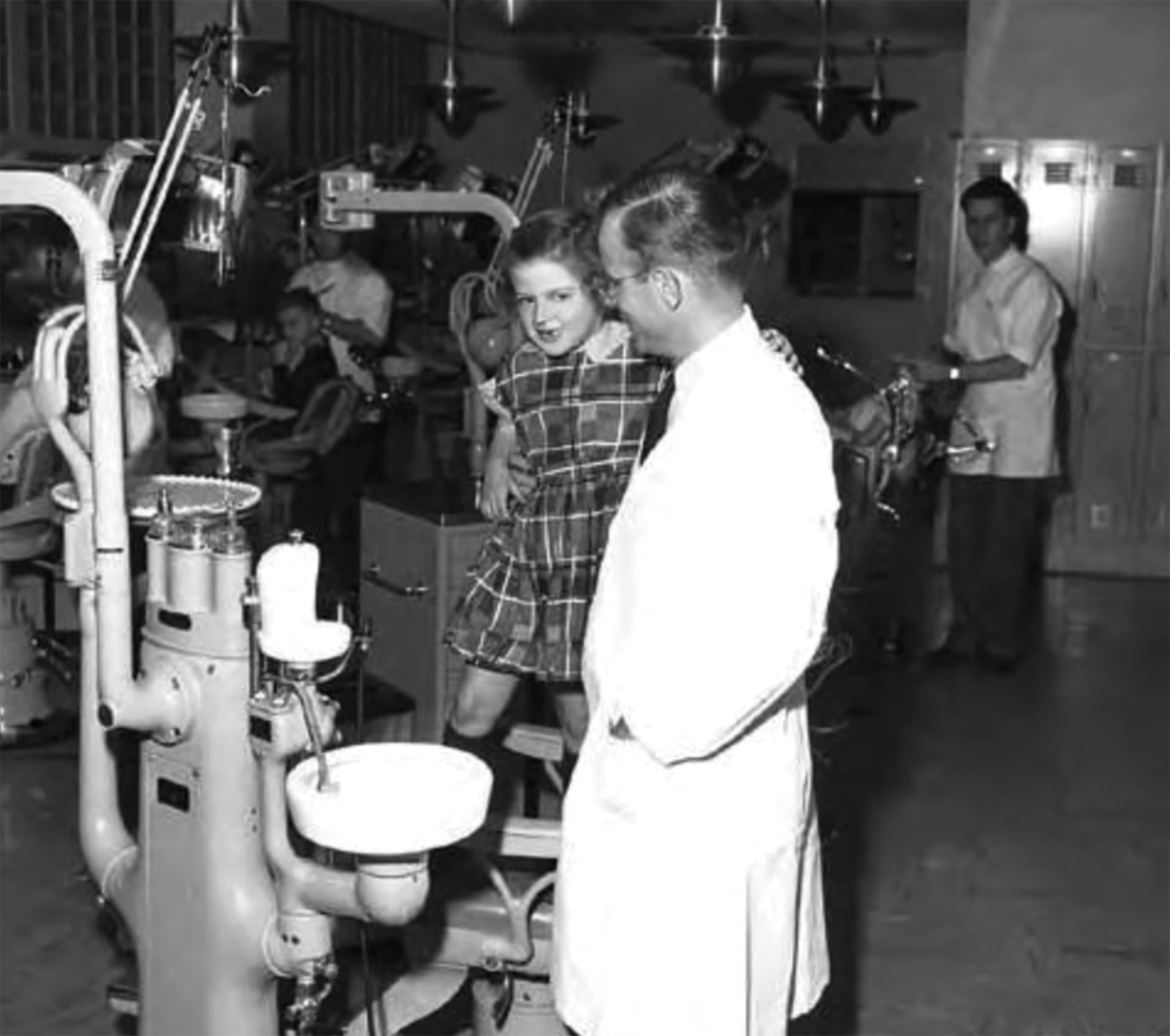Oral history Oral history Oral history
From the Bagley Hall attic to global outreach: The School of Dentistry celebrates 75 years.
By Luna Reyna | September 2021

In early 1946, while Dean Ernest Jones developed plans for a visionary new school of dentistry, labs were being built in the fourth-floor attic of Bagley Hall. The first class of students would soon sit shoulder to shoulder at long workbenches to learn dental anatomy and practice on models of mouths and teeth.
“We are starting from scratch,” Jones told The Seattle Times. Wanting “to represent the highest ideals the profession has to offer,” he laid out a vision for programs in biological and technical research and emphases on preventive and children’s dentistry. Today, Jones’ ambitions for dental education and research at the UW have been surpassed, with additional focuses on equity and community service.
The School of Dentistry consistently ranks as one of the top dental schools in the country. Quacquarelli Symonds, a global higher education research company, counts it fourth in the U.S. and in the top 15 in the world. But the public mission involves more than training the 400 students and residents. The school has become a resource for minority and underserved communities throughout our region. Programs like the Access to Care project remove barriers to dental care, provide educational opportunities and diversify the dental field itself.
When the pandemic hit, many outreach programs were put on hold, including partnerships with Safe Harbor, Union Gospel Mission, Mary’s Place and the Chief Seattle Club. After a year of not being able to tend to the oral care of underserved communities, clinics are slowly beginning to reopen, says Beatrice Gandara, the director of Educational Partnerships & Diversity for the school. “We’re in a lot of different places in the community. We try to take care to where people are,” she says. “There is so much unmet need. When students go out, they actually meet some of those needs and that’s a message to the communities they serve, that the health professionals care enough to come out and provide care.”
“We’re in a lot of different places in the community. We try to take care to where people are.”
Beatrice Gandara, School of Dentistry
Not only do these programs create trusting community connections but, according to Gandara, serving diverse communities prepares students to work with a diversity of patients as professionals. “They learn from the patients how to be a care provider in the community, and they learn about other cultures,” Gandara says. “Oftentimes they may not have worked with migrant farm workers or Native Americans or Pacific Islanders—real communities that exist in Seattle and the Northwest.”
In 2007, the UW launched a Regional Initiatives in Dental Education program to train dentists for practices in rural and underserved communities in the state and region. Today it is one of the school’s crown jewels. RIDE students start in Spokane, spend two years on the Seattle campus and then return to Eastern Washington for fourth-year rotations in local health clinics. This training structure serves the Spokane area by bringing in new dental professionals and increasing the quality of care for underserved populations.
The barriers to access, and disparities in the quality of dental care vary depending on intersecting factors like race, gender, class and geography. The UW has gone to great lengths—locally and globally—to bridge the oral healthcare gap. The Timothy A. DeRouen Center for Global Oral Health, which was established in 2013, offers research and training collaborations in Kenya, Thailand and Peru. In Seattle, the center provides refugees with access to care.
“When you [volunteer] it kind of gets in your blood,” Gandara says. “You realize that part of being a health-care professional is going out there and doing care that’s not associated with income. You go out there and do it to take care of people.”
Pictured at top: Pediatric dentistry has been a priority for the school from the start. A UW dentist poses with a child patient in the School of Dentistry clinic in the Health Sciences Building in 1949.